THE HARSHAWATS
David Brenkus is an artist living in the Duboce Triangle. He is also a cabinetmaker who lovingly cared for his home, investing thousands of hours repairing and renovating it over the 34 years he has lived there. When the previous owners went bankrupt in the financial crisis of 2008 and became tenants in their own property, the Harshawats bought the property in a foreclosure sale at a distressed price. After buying the building they forced the previous owners out. Now they are Ellis Act evicting David Brenkus and his long time roommate from their home at 53-55 Walter Street. Walter street is not only David's home, but it is also his place of work, art studio, gallery and workshop.
Dr. Paras Harshawat and his wife Roopam Harshawat are owners of their own private for profit psychiatric hospitals in the Midwest. They don't seem to understand that it is bad for your mental health to be evicted from your home, especially in the middle of a housing crisis!
Their sons are "Tech Entrepreneurs" who believe in the "sharing" economy and the privatization of public services. Kavi Harshawat is a former Google employee and creator of the website GoodCTZN.com. Kavi presents himself as a progressive problem solver. In his "most recommended" blogpost he poses the question: "Whatever happened to civic virtue?" His brother Ish Harshawat is the cofounder of HaystackTV, advertised as "your own personal news channel". Evidently they never got the news that evicting your neighbors is not the work of a good citizen, and that stealing someone's home is not sharing!
Emma Acker, the wife of Ish Harshawat and assistant curator of American Art at the De Young Museum, is also one of the evictors. She was present at the first viewing of David's building and has been the most blunt proponent of his eviction. In addition to directly threatening David with eviction if he didn't move voluntarily, she told him, "You don't seem to understand that we own it now - it is ours!" and "We don't want to share it with you!" Emma Acker doesn't realize that evicting one of San Francisco's remaining artists is not a good way to support the arts in our fair city!
Why is a De Young Curator evicting a San Francisco Artist? Emma Acker likes to tell an anecdote about the abstract expressionist artist Richard Diebenkorn in which he said he wasn't going to let critical or commercial concerns dictate whether or not he was going to go on painting in a figurative mode or not. She likes to say about him, "this was absolutely someone who is really immune to these external pressures and I think that makes him a really interesting and sort of refreshing art world figure."
David Brenkus is precisely such an artist. For 26 years he has worked at creating new kinds of experimental photography, without regard to any outward success or commercial reward. Could Emma Acker be letting her commercial concerns overrule her commitment to Art?
Help stop the eviction of David Brenkus! Help keep artists in San Francisco! Call the De Young (415) 750-3600 and ask Curator Emma Acker to drop the eviction!
CCA Comics students draw stories from the housing crisis on 48 Hills: Drawing the Crisis: Tony Cha and Liam Lee on the eviction epidemic
On the Artwork of David Brenkus

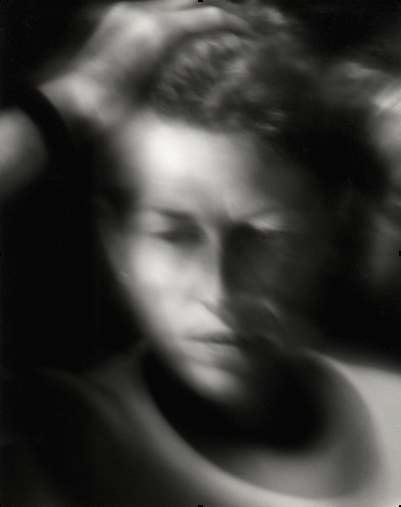
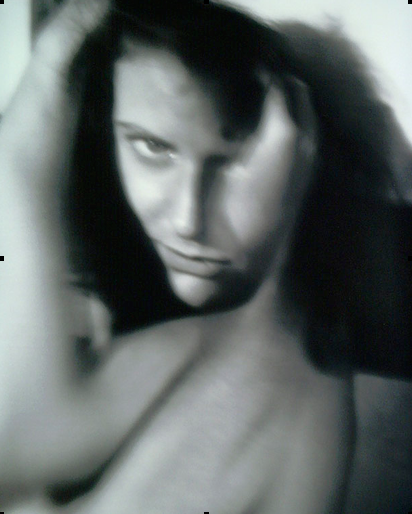
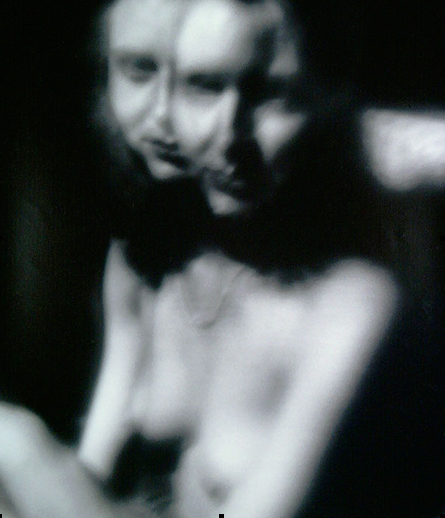
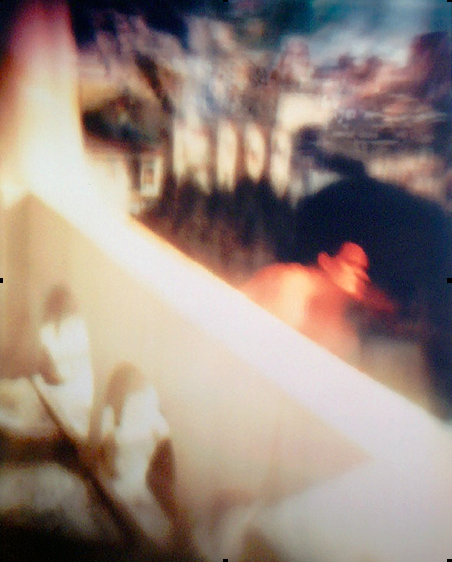
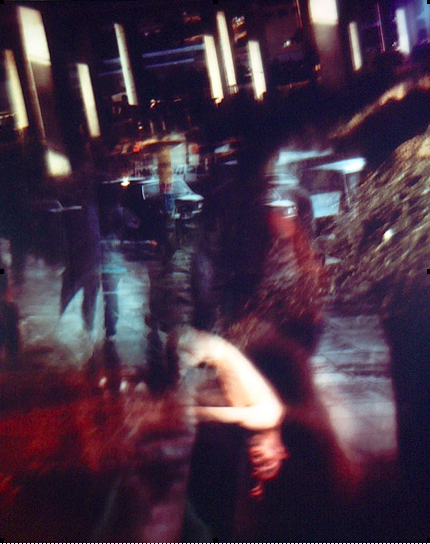
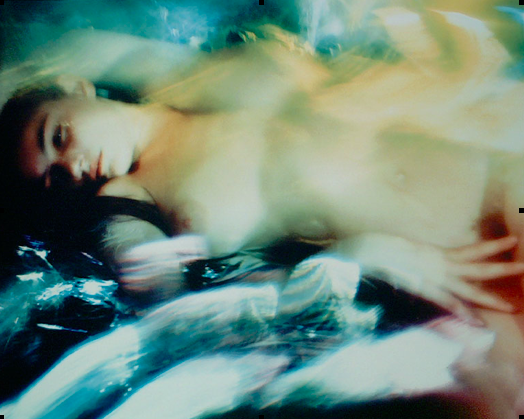
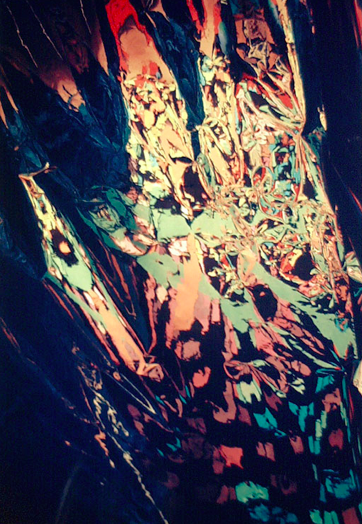
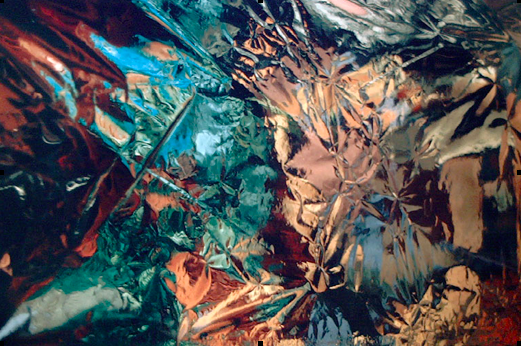
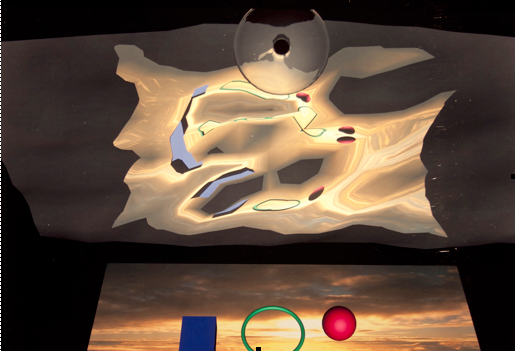
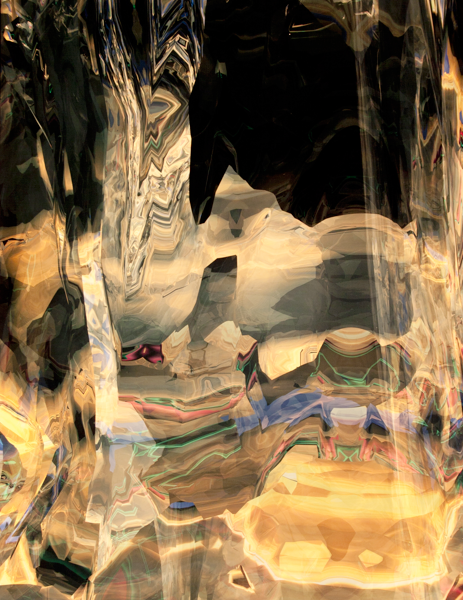
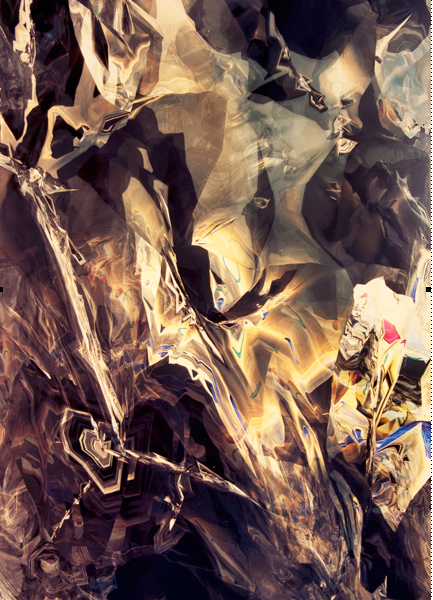
The Experimental Photography of David Brenkus
David Brenkus started working with photography in 1989. Over the years he has designed and created multiple photographic projects based on original forms of experimentation. His first experiment was to make his own camera lenses from broken glass in order to create deformations in the image. He then combined this technique with the use of multiple exposures and later introduced the use of a Mylar mirror to create abstract photographs that exploited the infinite number of images that can be created through the complex reflection of light. Later again he taught himself computers and programming to release the image from the restrictions of gravity and physical space, thereby increasing the number of possible images that can be created from any single set of objects or images.
Creating Camera Lenses from Wine Glasses
What if you had a lens that could change shape, what would happen if you didn’t just use the regular lens, but could alter it and move it – what would happen to the image? This is the question that led David Brenkus to his first photographic experiment:
“I started to experiment right away. I took pieces of glass that I had lying around, I froze some water and held it up to the camera and I discovered that certain pieces of glass could work as lenses – I found that the bottom of wine glasses were basically lens shaped. I would break off the stem and use the different bottoms of wine glasses as lenses. I would put multiple pieces of glass in front of each other and by moving them around in relation to each other I would get deformations in the image that expressed more than the static shot. My thinking was that we all see life differently - why is there just one way to see in photography? People don’t see what is right in front of their eyes. So much of what we see is emotional. One person walks into a room and sees one thing and another person sees something else. People see life differently and I hoped to show that with my photography. Every time I took a photograph I tried something new.”
Wineglass Portraits
David started by shooting simple portraits of people he knew or who he met in cafes, both outdoors and in his living room using lights. To make the image more interesting he would have the person to raise one of their hands into the frame. He also experimented with different films, chemical development, printing and toning until he ended up with a process that he liked.
“When I began doing this I was neither a photographer nor an artist, but a carpenter taking a class at City College. What began coming out right away so excited me that I knew I was on to something. Since then I have never looked back.”
“Things began to happen. Deformations evoked feelings or ideas in me. Lucky accidents began to occur. I also assembled my first series out of several images. In this image of Jorge, a poet from El Salvador taken in an alley next to a cafe, I thought I was seeing the Shroud of Turin. Or the texture of the print became almost like a charcoal drawing, like in this image of Sonya I photographed in my living room.”
Black and White Nudes:
Encouraged at how the portraits were coming out, David decided to do a few nudes. This began a long period in which the deformations were expressed in the body as well as the face.
“I thought I might be able to do something different with the nude. In photography you often see pictures of nude women without their faces even showing. I resolved to always alternate between shooting men and women and to always show the face of the person. I learned that when it went well these sessions were a collaboration. The best example of this was a series I shot with Valerie. She was enthusiastic and we kept doing more sessions together. Many interesting photos resulted though I reduced them down to a series of 21 pictures.”
“In this photographic series I tried to show in the selection of the images what it felt like to be 21 – all the different things that are in motion in becoming an adult.”
Multiple Exposures:
Next, David began working in color and with multiple exposures on sheet film.
“I thought of photography as similar to painting. You have realistic painting and you have abstract painting – in photography you can have both too.”
Featured Photographs:
“This one is a multiple exposure - of Guy who I shot in my living room combined with an image from the top of the towers of Saints Peter and Paul Church in North Beach. I went and got permission to go up in the towers and I shot pictures there using my wineglass lenses. I liked this one very much because it looked almost like an El Greco of the city.”
“This is a multiple exposure – there is Timbo who modeled in my living room, a rainy street, a man with his umbrella and another shot from under the freeway – at least three exposures.”
Working with Mylar and Reflective Surfaces:
David gravitated toward using reflective materials as they also could be used to alter the image. At one point he gilded one of his walls to serve as a backdrop. However he fell in love with Mylar because of its wonderful reflective qualities.
These are some of the first Mylar pictures that I did – part of a series called Mother Earth – there were three, this is number one. Meeka is lying down on Mylar and so the background is made up of Mylar reflections. What I liked about the Mylar was that it evoked all kinds of ideas.
Working with a Mylar Mirror:
The next project steered David's work more and more into the realm of abstraction. He made a large shapeable mirror out of Mylar and began making a series photographs shot into the Mylar reflections.
“I added the Mylar mirror because it is a fabulous substance for reflecting light. Mylar breaks up the light. Although its reflection is similar to water, in my mind it is like a lens. A lens collects light and it focuses the light that hits a scene and it puts it into your frame of reference. But what this kind of lens does is different, it takes light from all different places and it is not logical. It’s a lens that is giving you a greater idea, something beyond. Every angle you look at it, you see something else. That’s what’s magical about it.”
“I found the Mylar mirror so useful that I also did a series of shots using a 'normal' 35mm camera. I would go back and forth between altering the mirror, the objects on the floor or my point of reference when I took the shot into the mirror. One of my favorites that came out of this was The Fates. The reflections of cut pieces of paper take the general shape of a hand but there are all kinds of interesting faces and figures in it. This one, the Lion’s Lament, was done using colored cloth.”
Going Digital:
After the experiments with Mylar, David got fascinated with computers and with 3D special effects and he started working with a 3D modeling and rendering program to see if he could create a Mylar mirror in the 3D program that would allow for more freedom of movement.
“I replicated the setup with the Mylar cloth digitally. My interest is in making as many different types of pictures as I can – part of the joy is to see what is going to come out. Ideally I get 20-30 different types of images that don’t even look like they came from the same set up. In a 3D model, you could put the camera anywhere, you could change the mirror into impossible shapes. The problem you have in working in real life is there is always gravity. The Mylar mirror wants to fall to the ground; it wants to assume certain shapes and not other shapes. In 3D there is no gravity unless you simulate it, so you can make impossible shapes. I started to do a series of shots where I changed the mirror and simulated a lens with reflective and refractive properties so that the light would bounce around. I did a series of shots where I altered the mirror, altered the lens and moved the camera around.”
“Then I tried to render the images and that takes time – it took me 3 weeks to do one image. I rendered it first at 4K and then at 16K when the computers got faster. I wanted very high resolution to print large with beautiful detail. I decided I wanted to print the photographs on film to have the depth of the blacks and the luminosity of photographic paper. Light has to hit a photograph in a certain way for it to come alive. I got a film recorder, at a time when the digital revolution was complete. I was trying to do something digital, but analog. It was difficult – I spent several years trying to calibrate the film recorder but along the way I learned to program.”
“These images were created with digital Mylar. They are all taken using three objects– a sphere, a torus and a cube – and an image of the sunset. It’s a simple set up that gives a lot of different results. The virtual Mylar acted as a lens – it created what you see. The image is computer generated, but you set up the mirror, you set up the shot, and then the computer does all of the calculations pixel by pixel, line by line.”
“I see things in these images – I see many different figures and images in each photograph. You have to find what you see in the images yourself. One of the beautiful things about these abstract images is that you can turn it any way you want and you’ll see something different in it. In one of my exhibits I did that, I wanted to create a motor that would flip the images upside down because an abstraction should work more than one way."
David's Current Photographic Project:
David's latest project also uses his own computer programming to select and merge digital photographs into works of art. This project builds on his enjoyment of programming and his theory of photography as selection:
“I wondered if I could do something with digital snapshots. Digital cameras are nice, but the pictures I took were just snapshots. I wanted to make art from these snapshots. And I have been working on a software that will digitally composite these snapshots into artwork. We’ll have to see what comes from it. With any luck this year I will start generating some new work as part of this project.”
“To me a photograph is a selection process more than anything. Whatever you do to create a photograph, whether you just hold up a camera you shoot or you do something very elaborate, in the end, you end up with a choice – you end up with a choice of this picture or that picture. Out of these twenty, thirty pictures or a thousand pictures, which is the picture that speaks to you? And that’s really what a photograph is, it is the choice that says it is this and not that. That is the essence of a photograph; it is the selection of it. How you make it and what kind of camera you have is not important. If your eyes are good, you’re going to make the best photograph or best work of art.”
David's Studio and Gallery (slated for eviction):
“The former landlord allowed me to rent the basement and use it as a space for my carpentry and as a gallery and studio where I could shoot images and make cabinets. I made all the frames for my photographs here in the basement out of recycled wood that I pulled out of a dumpster just across the street. Renovating and rebuilding the basement is something that almost ruined my back. I put the walls in, the floors, sandblasted the bricks and the wood and the doors. But it was worth the hard work because I saw the potential of having a place where I could do work and now I have the option to set it up as a gallery. I hope people will be able to come and see the images in real life because they look so different in real life than when you see them on a computer. They are not meant to be seen on a computer.”
“I have a lot of my artwork up now because of the eviction. Normally I don’t like to publicize my work, but I want people to see that I have been working here without any financial gain. I don’t know why we artists do these things, but I have been doing it for so long. I just have to do it. I just can’t stand to leave it.”
THE HARSHAWATS
Help stop the evictions of David Brenkus and David Raish! Call thesenumbers and (politely) ask them to drop the evictions.
(415) 335-3012 Ish Harshawat
(617) 459-5547 Kavi Harshawat
(812) 299-1414 Dr. Paras and Roopam Harshawat
(866) 644-8880 Toll Free number for Harsha Behavioral Center)
(812) 234-4899 Harsha Behavioral Center)
Dr. Paras and Mrs. Roopam Harshawat
They have their own private, for profit psychiatric hospital. She is the President and CEO, he is the VP and Medical Director.
Harsha Behavioral Center
1420 East Crossing Blvd.
Terre Haute, IN 47802
http://www.harshacenter.com.
They also have something called the Harsha Cognitive Center at 1050 W Johnson Dr., Terre Haute, Indiana 47802. That website is http://harshacognitive.com/.
They have a second location for that business at 1900 Stringtown Road, Evansville, IN 47711She is also the President of Clinco Research, at the East Crossing Blvd address with the website: http://clincoresearch.com.
Prh, Inc Terre Haute - real property, medical doctors office
Clinico, Inc.Paras: counsellor, southeastern-illinois-counseling-centers-inc
http://www.corporationwiki.com/Illinois/Olney/southeastern-illinois-counseling-centers-inc/48209565.aspx
Complaints and reviews
http://www.in.gov/judiciary/opinions/archive/021002.smb.html
https://local.yahoo.com/info-16095900-harshawat-paras-md-hp-terre-haute
http://www.ucomparehealthcare.com/drs/paras_harshawat/
Ish Harshawat
https://twitter.com/ishish
https://www.facebook.com/iharshawat?fref=ts
https://www.linkedin.com/in/ishharshawat
current: Co-Founder @haystacktv
Addy Mobile, Inc (2009, inactive)
Kavi Harshawat
He just went around the world and posted pictures
https://plus.google.com/+KaviHarshawat/posts
https://www.facebook.com/GoodCTZN
https://www.facebook.com/kavih?fref=ts
https://www.linkedin.com/in/kavih
Digital Services Expert, U.S. Department of Veterans Affairs
March 2015 – Present (1 month)Washington D.C. Metro Area
Code for America Fellow (2014)
February 2013 – Present (2 years 2 months)
October 2012 – January 2014 (1 year 4 months)San Francisco Bay Area
GoodCTZN is a new civic platform that gives average citizens the power to improve their cities. It’s a way to discover, learn about, and support local civic projects. Citizens find local civic projects through GoodCTZN.com, their social networks, and GoodCTZN posters around their city. Armed with important information about each project, citizens can work with project leaders to enact real change within their communities.
UX Designer and Researcher, Google
February 2010 – October 2012 (2 years 9 months)
Koloa, Hawaii - listed on eviction papers, but he appears to live in Washington DC.


















